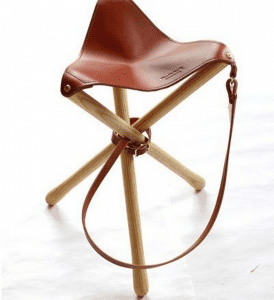New Year is the perfect deadline for turning your hobby into a real shop. Craft store websites let maker brands sell beyond the weekend market. You’ll set a budget, pick a platform, and map products that ship well. We’ll walk through a lean plan that fits a hands-on schedule. By January 1, you’ll have a storefront ready to take orders.
Contents
Why Launch Before New Year
New Year gives you a hard deadline that sparks focus. Holiday traffic is already primed to buy handmade gifts and kits. A soft launch in December turns curious visitors into subscribers. Gift recipients become your first repeat buyers in January, keeping orders coming after the rush.
January 1 also resets the numbers. You can track clean cohorts from day one and see what works without seasonal noise. Pricing tests, bundles, and email automations show clearer signals. You’ll make faster decisions because the baseline isn’t muddied by months of mixed data.
There’s a practical edge for builders, too. Year-end downtime lets you batch photos, write listings, and prep shipping materials. Vendors are open and lead times improve if you brief them now. Early publishing gives search engines time to index your pages before peak “new hobby” interest hits. Launching before New Year builds momentum, reviews, and word of mouth that compound through the first quarter.

Building a Website Through Network Solutions
Network Solutions bundles domains, hosting, security, and an AI builder so makers can ship faster. You’ll launch a clean storefront, manage growth, and skip tool sprawl that slows weekend builds.
AI Website Builder and Templates
Spin up a draft site with their AI website builder, then refine it with drag-and-drop sections, stock assets, and industry templates. You control layout, copy, and imagery without touching code. Plans bundle hosting and a first-year domain, so setup stays simple. Social integrations help you post and sell where your audience hangs out. It’s a fast path from concept to publish.
WordPress and Standard Hosting Options
If you want the flexibility of WordPress, choose their WP hosting plans geared for speed and protection. Prefer a general stack for custom code or non-WP tools. Use one-click installs, staging, and SSH to keep builds tidy and reversible. This mix lets DIYers start simple and grow into advanced workflows as traffic and catalog size expand.
Ecommerce Store and Templates
Selling kits, plans, and finished pieces is straightforward. Their team can deliver a custom store with space for an initial catalog and live support during setup. You’ll launch with clean product pages, easy cart flows, and a look that matches your brand. That means less fiddling with theme code and more time building inventory and content that converts.
Security, SSL, and Trust
Protect customer data and checkout with SSL that aligns to your risk profile. Start with DV for basic encryption or step up to OV and EV for stronger identity verification and buyer confidence. Clear setup guides explain the extra validation steps before issuance, so you’re not guessing at requirements. Secure pages build trust and reduce abandonment at payment.
Support and Done-For-You Help
Hit a blocker. Get phone or chat support to keep the project moving. Short on time. Hand the build to their in-house designers for a professional site on a predictable timeline. This hybrid approach lets you DIY what you enjoy and outsource the rest without switching providers or rebuilding later.
Ready to launch your own site before New Year? Sign up with Network Solutions today and start building your craft store website.
Define Your Niche and Ideal Customers
Start by narrowing your shop to a lane buyers understand instantly. Define what you make, who it helps, and why it’s worth paying for. This clarity streamlines product choices, pricing, and marketing, while keeping production feasible for a one-person workshop.

Choose a Category You Can Master
Pick a focused category you can build repeatedly with consistent quality. Think charcuterie boards, leather valet trays, or laser-cut wall art, not “anything handmade.” Align materials with tools you already own and skills you can scale. Standardize sizes and finishes to shorten lead times. Limit custom work early. You’ll protect margins, reduce waste, and keep inventory predictable. A tight category also makes photography, descriptions, and shipping much easier to systemize.
Profile Your Best-Fit Customers
Describe your ideal buyer like a real person. Include their budget, taste, gifting needs, and where they hang out online. Home renovators may want durable, minimalist hardware. Parents may prefer safe finishes and quick-ship gift kits. Note objections such as price, maintenance, or space. Write product copy that answers those doubts. Match listings, bundles, and tutorials to their daily life so the store feels built just for them.
Validate Demand Quickly
Test demand before you stock up. Post early prototypes on social channels and local groups. Offer a simple preorder or waitlist. Track clicks, saves, and questions to learn what matters most. Compare interest across two designs or price points to see winners fast. Ship a micro batch to collect reviews and photos. You’ll avoid dead inventory, refine features that buyers actually care about, and enter launch week with proof people want your work.
Positioning and Differentiation
Decide the lane you’ll own. Luxury heirloom, eco-friendly essentials, or budget-smart kits. Anchor your story in something tangible. Materials, joinery, finishes, or lifetime care guides. Show what competitors can’t match and charge accordingly.
Use naming, packaging, and photography to reinforce the promise. Add value with care cards, jigs you designed, or downloadable templates. Clear positioning helps craft store websites stand out, win better keywords, and convert faster with fewer discounts.
Scope Products to Your Capacity
Plan offers that fit your calendar and workspace. Favor items that batch well and ship safely. Set caps on weekly orders to protect build time. Create bundles to raise average order value without extra labor. Keep a few made-to-order slots for premium buyers. Track hours per item and revise listings if time runs long. You’ll stay profitable, hit promised ship dates, and keep customers returning for reliable quality.
Product Strategy for Makers
A clear product strategy keeps your shop profitable and sane. Define what you make, how you make it, and how it ships. Align decisions with customer value and repeatable production.
Build In-House vs Outsource
Protect your signature work by building core pieces in-house. Outsource repeatable steps like laser cutting blanks, card printing, or powder coating to reliable partners. Keep final assembly and quality control on your bench.
Use dropshipping for low-risk accessories like refills, replacement blades, gift boxes, felt pads, to lift average order value without new inventory. Publish realistic lead times and flag split shipments at checkout. Set supplier SLAs, sync stock counts, and mandate neutral packaging or branded inserts. You’ll extend the catalog while keeping your bench time for craft.
Standardize SKUs, Sizes, and Finishes
Limit variants to the few that photograph well, ship safely, and batch cleanly. Lock dimensions, hardware, and finishes into a simple bill of materials. Create jigs that speed drilling, sanding, and alignment.
Batch work in stages to reduce tool changes and waste. Standardization makes listings consistent, cuts defects, and shortens restock cycles. It also keeps craft store websites easier to navigate and maintain.
Pricing That Protects Margins
Price with real costs plus value. Count labor hours, wear on tools, consumables, packaging, platform fees, and a profit target. Use good-better-best tiers and bundles to raise order value. Set a floor price that survives sales and promotions.
Test price endings and shipping thresholds, then review contribution margin monthly. Clear math prevents busy seasons from turning into break-even weeks.

Packaging, Prep, and Lead Times
Design packaging as part of the product. Choose inserts and wraps that stop scuffs and absorb drops. Test-ship samples to check corners, finish rubs, and dimensional weight.
Prepack bestsellers and stock care cards to speed fulfillment. Publish conservative lead times and cap weekly orders if needed. Reliable delivery builds reviews and reduces support tickets.
Catalog Discipline and Iteration
Launch with a small, tight catalog. Track conversion, add-to-cart rate, return reasons, and production hours per item. Promote winners, retire slow movers, and spin variations based on real demand.
Schedule seasonal drops and limited runs to keep interest high. Update photos and copy when you change materials or finishes. A disciplined catalog stays profitable and easier to scale.
Conclusion
New Year is a clean finish line and a strong starting point. With a focused niche, a tight catalog, and honest lead times, your shop stays profitable. Choose tools that simplify hosting, payments, and security so you’ll build, not babysit tech. Publish clear photos, care notes, and policies to earn trust and repeat buyers. Launch now, iterate weekly, and let your craft store website drive next year’s growth.
Looking for ideas on what to sell on your site? Check out our Balsa wood projects for ideas!






